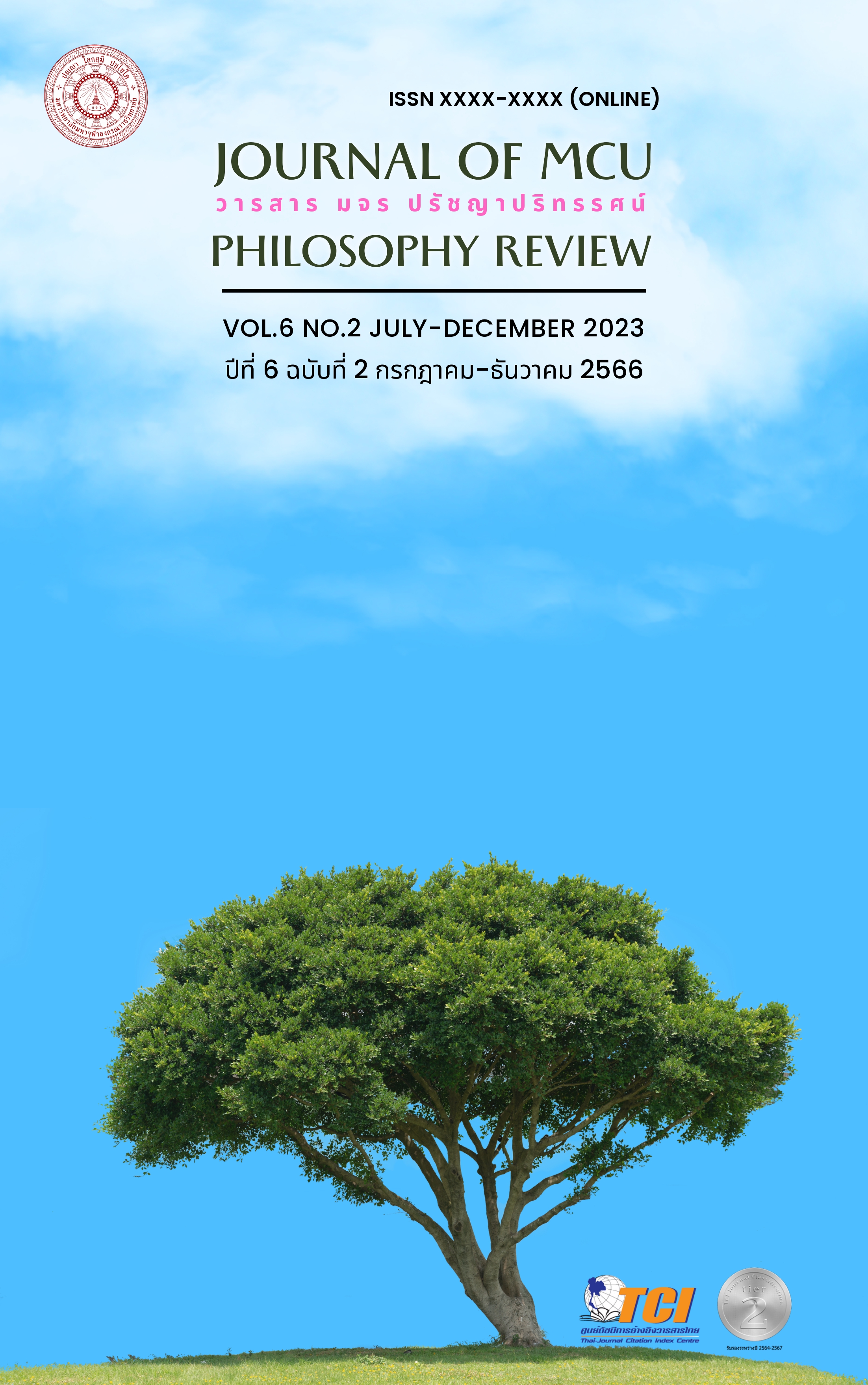Phra Chao Liab Loke of Wat Kok in Tha Nao Sub-district, Phu Phiang District, Nan: Transliterations, Translation and Analytical Study
Main Article Content
Abstract
This article aimed: 1) to study the history of the Phra Chao Leib Lok of Wat Kok in Tha Nao Sub-district, Phu Phiang District, Nan Province, 2) to transliterate and translate the Phra Chao Leib Lok of Wat Kok and, and 3) to analyze the Phra Chao Leib Lok of Wat Kok. This is documentary research. This research was found that: 1) in history, the Phra Chao Liab Lok of Wat Kok had 11 bindings, whose names in writing disappeared. Approximately, it was written in 1915 and was 107 years old, 2) in translating and translating Phra Chao Liab Lok of Wat Kok, its scriptures had 11 manuscript bindings, totaling 475 pages, so, I transliterated and translated 130 pages, and 3) in analyzing the scripture, 4 aspects were found that: 1) an analyzing of the physical appearance and practical usages shows that Wat Kok edition of the Phra Chao Liab Lok scriptures refers to Lanna palm leaf scripture, measuring 5 cm. in width and 51.5 cm. in length. The craftsmanship of the character lines is exquisite, easy reading. Furthermore, Buddhist monks always use this scripture for preaching during the Buddhist Lent festival, 2) an analyzing of the main structure and content of the scriptures reveals that it consists of three sections, the Uddesa (beginning chapter), the Niddesa (content), and the Paṭiniddesa (ending chapter), 3) an analyzing of the Buddhadhamma principles presenting in the scriptures demonstrates such as diligence, five precepts, the adherence to the five principles of morality, Hiriotappa, Anupuppikathã, Sampatti-sukkha, Micchãdiṭṭhi, Yamakapatihariyã, Akusalamũla, Indriyasaṃvara, and Dhammacakkappavattana Sutta. Lastly, 4) an analyzing of significant events reveals the presence of seven important occurrences, namely, the bestowal of Lord Buddha's hair relics, the imprinting of Lord Buddha's, Footprints of Lord Buddha, the witnessing of the Nagas of the Declining Era of Humanity, King Ashoka and the Buddha, and the division of the relics.
Article Details

This work is licensed under a Creative Commons Attribution-NonCommercial-NoDerivatives 4.0 International License.
บทความที่ได้รับการตีพิมพ์เป็นลิขสิทธิ์ของวารสาร มจร ปรัชญาปริทรรศน์
ข้อความในบทความที่ได้รับการตีพิมพ์ในวารสาร ถือเป็นความรับผิดชอบของผู้เขียนบทความ และข้อคิดเห็นนั้นไม่ถือว่าเป็นทัศนะและความรับผิดชอบของกองบรรณาธิการวารสาร มจร ปรัชญาปริทรรศน์
References
ชนินทร์ ผ่องสวัสดิ์. (2560). อิทธิพลของวรรณคดีพุทธศาสนาอินเดีย-ลังกาและวรรณคดีพุทธ ศาสนาล้านนาที่มีต่อการประพันธ์พระเจ้าเลียบโลก. วารสารศิลปศาสตร์ มหาวิทยาลัยอุบลราชธานี, 13(2), 35-63.
ตรีศิลป์ บุญขจร. (2548). พุทธตํานานพระเจ้าเลียบโลก: เรื่องเล่าชนเผ่าไท. วารสารไทยศึกษา. 1(1), 148.
ธนพร เรือนคํา, พระครูสมุห์ธนโชติ จิรธมฺโม, และประทีป พืชทองหลาง. (2564). การท่องเที่ยวเชิงพุทธตามคัมภีร์ใบลานพระเจ้าเลียบโลกในจังหวัดเชียงใหม่. วารสารปณิธาน. 17(2).203-232.
เธียรชัย อักษรดิษฐ์. (2552). ตำนานพระเจ้าเลียบโลก การศึกษาพื้นที่ทางสังคมและวัฒนธรรมล้านนา ภูมินาม ตำนาน ผู้คน. เชียงใหม่: สำนักพิมพ์ธารปัญญา.
รัตนาพร เศรษฐกุล. (2552). ประวัติศาสตร์เศรษฐกิจวัฒนธรรม แอ่วเชียงใหม่-ลําพูน. เชียงใหม่: สำนักพิมพ์ซิลค์เวอร์ม.
สมหมาย เปรมจิตต์. (2524). พระเจดีย์ในลานนาไทย. เชียงใหม่: สถาบันวิจัยทางสังคม มหาวิทยาลัย เชียงใหม่.
สินีนาฏ สมบูรณ์อเนก. (2555). พุทธศิลป์ล้านนา: คุณค่า ศรัทธา และการอนุรักษ์. เชียงใหม่: ศูนย์วิจัยและบริการวิชาการ คณะสังคมศาสตร์ มหาวิทยาลัยเชียงใหม่.
สุรชัย ชินบุตร. (2559). อุรังคธาตุนิทานพุทธตำนานพระเจ้าเลียบโลกฉบับอีสาน: การสืบทอดและการสร้างสรรค์. วารสารไทยศึกษา. 12(1), 1-34.


